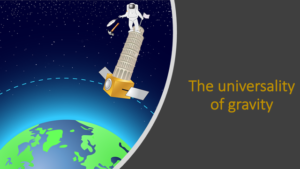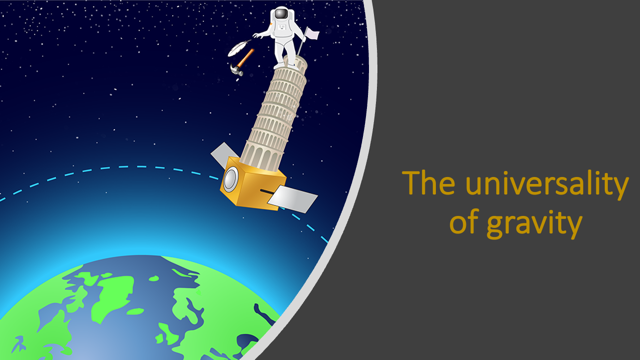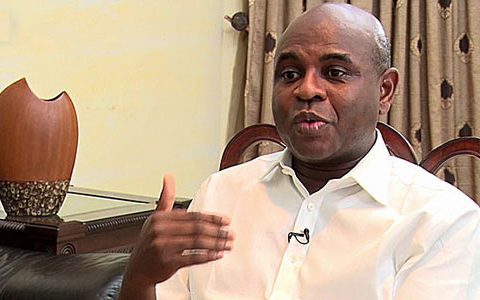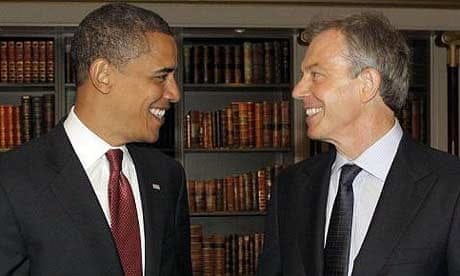
In this edition of our Science column, we are going to talk about the obscure facts but prominent influence of gravity. Physics? Oops, I have let the cat out of the bag. Yeah, I know, physics was a dreaded subject at school for you and you did give it a wide berth, but don’t panic, I am going to make it a bit of fun for you. I promise.
If I gave you two objects, a stone and a feather, and I asked you to let them drop simultaneously, which do you think would hit the ground first? “Oh, that’s easy, the stone,” you replied, overjoyed. You are of course right, but do you know why? Again, you rattled off the answer, “Because the stone is heavier than the feather.” Correct again. You are really on fire. Well done. In fact your answer approximates the thinking of the ancient Greek philosopher, Aristotle, concerning gravity, which essentially states that objects fall at a speed that is proportional to their weight. This means that if you take two objects that are of equal size but different in weight, the heavier object will hit the ground first. But are you and Aristotle correct?!
Join our WhatsApp ChannelWhat if you were in a vacuum and you were asked to repeat the same exercise? By the way, a vacuumvacuum means emptiness without any matter, including air. “You mean like space?” Yes, except that space still contains matter, generally low-density particles like hydrogen, helium, dust, etc., but the pressure in space is not as great as on earth. “If I were in space and holding these two objects, the stone and the feather, would I be floating like the astronauts?” Of course you would, but don’t get carried away and call yourself an astronaut. You have a long way to go before becoming one!
Ok, now that you are in a vacuum, drop the two objects you are holding. Which hits the bottom first? “Both,” you replied, amazed. Do you know why? You shook your head, dumbly. In a vacuum, there is no air resistance, hence, the feather fell at the same rate as the stone. Mass is of no consequence in space, therefore, two objects regardless of their different masses, fall at the same rate to one another.
The difference between the first experiment and the second one was that in the first experiment performed outside a vacuum, gravity dictates that both objects are accelerated at the same rate, but air resistance slows down the rate of fall of the feather because it is lighter, hence it flutters down gently, while the stone dropped down immediately and faster. Gravity by the way, is an unseen force pulling objects towards each other. Without Earth’s gravity, you wouldn’t be able to keep yourself on the ground, you would be floating. On the moon, there is less gravity, and you would float, again, like the astronauts.
Ok, now that you have grasped a little sense of how things stand, let’s discuss our main subject. We are going to (pretend we are top scientists and) rub shoulders with the likes of Galileo, Newton, Einstein, etc. But just to give you a heads-up, our topic is rather a niche one. So, if you are not a physics buff, I apologise in advance for taxing your brain. But here in the Science column, we aim to cater for every taste.
The Italian professor of Mathematics, Galileo Galilei, between 1589 and 1592 in order to lend credence to previous experiments of the notion that the time of descent of two objects is independent of their masses, was said to have dropped two spheres of different masses from the Leaning Tower of Pisa (by the way, Pisa is in the Tuscany region of Italy). The objects fell at identical rate of acceleration, thus, disproving Aristotle’s earlier theory of gravity.
Over the years, many scientists have continued to test this theory now known as the Equivalence Principle (EP), which states that in a gravitational field, in the absence of any other acting forces, all bodies fall in the same way independent of their masses and internal compositions. This in other words, is the universality of gravity or free fall.
Remember the story of Isaac Newton, a falling apple and gravity? No? Just Google it! Anyway, the equivalence principle is a major part of Einstein’s theory of general relativity, and also forms part of Newton’s theory of gravity, which states that the gravitational force between two massive bodies is proportional to the product of their gravitational masses. Massive bodies have two masses: the gravitational and the inertial masses. Newton assumed the two masses to be the same, meaning that the motion of a massive body (or other objects) in Earth’s gravitational field is independent of its mass. Newton proved this assumption by attaching different balls of unequal masses to a pendulum, which oscillate with the same frequency. This principle is commonly used in standing clocks (ie grandfather clocks).
Clearly, heavier objects should fall faster than lighter ones, you would imagine. But gravity is an unusual thing and does not conform to simple logic, and to understand its significance with relation to other important mysteries like the dark matter and dark energy, it is imperative to test it with more increasing precision. David Scott aboard the Apollo mission in 1971 in a bid to improve the accuracy of the equivalence principle, dropped a hammer and a falcon’s feather on the surface of the Moon. Both objects fell at exactly the same rate and the precision of the rate of fall was markedly improved compared to previous similar experiments, including Galileo’s.
In a new result published in the September 2022 issue of the journal, Physical Review Letters, with a viewpoint provided by Philippe Brax in the journal, Physics; Pierre Touboul and coworkers tested the equivalence principle with an unparalleled level of accuracy. In the experiment performed aboard the space-borne MICROSCOPE mission, two masses of titanium and platinum aboard the satellite orbiting the earth, were dropped exactly at the same time, and their rate of fall measured to an accuracy of 1 part per quadrillion (or 1 x 10-15 or 𝜂 ≤ 10-15, where 𝜂 = 0; we shall define 𝜂 later; by the way, 𝜂 is the seventh letter of the modern Greek alphabet called eta).
To put this precision measurement into context, Newton’s experiment with pendulums and calculating their period of oscillation only achieved an accuracy of 1 part per 1000. Friedrich Bessel in the 19th Century improved the accuracy to 1 part per 100,000. And in the tail end of the same century, the physicist Loránd Eötvös, used a torsion pendulum to confirm the equivalence principle to an accuracy of 1 part per 1 billion (or to be precise 5 x 10-9). This was a groundbreaking experiment then, which was honoured by naming the ratio between the acceleration difference of two massive bodies and their averaged acceleration, the Eötvös parameter, represented by 𝜂 (ie eta). The equivalence principle argues that 𝜂 is zero.
As mentioned before, Albert Einstein’s 1915 general relativity theory (which we shall not go into now given time and space constraints), was based upon the verification of the equivalence principle. Therefore, one way to verify the accuracy of Einstein’s theory of general relativity is to test the equivalence principle. This has been tested several times since the 20th Century as stated above, including the Lunar Laser Ranging (LLR) experiment and the Apollo mission of 1971. The aim of the LLR amongst other things was to accurately measure the distance between the Earth and the Moon. This would inform whether the two bodies, in accordance with the equivalence principle, are falling towards the Sun at the same rate, despite their different masses, compositions, and gravitational self-energies. The LLR data provided a 7.1 x 10-14 precision (or 𝜂 ≤ 10-14).
In a bid for precise confirmation of the equivalence principle, the French National Centre for Space Studies initiated the MICROSCOPE experiment by launching in 2016 a satellite that orbited the Earth for two and half years at an altitude of 710 km. Why go into all these expenses to launch a satellite, you would ask? Well, the fact is that the outer space provided the perfect condition for the experiment in that, as explained by Philippe Brax, “….. many of the systematic uncertainties inherent to Earth-bound measurements, such as the noise from seismic vibrations or the gravitational-field variations caused by nearby mountains,” were absent in space.
In the MICROSCOPE experiment as described by Philippe Brax, “…. two coaxial cylinders of titanium and platinum were placed in free fall [free-fall means under the force of gravity] in Earth’s gravitational field. The cylinders were held in place by electrostatic forces that corrected for tiny perturbations on the satellite.” By measuring the electrostatic forces required to keep the two cylinders in equilibrium, any deviations in those correction forces means that the two cylinders were falling at rates slightly different from each other. This in turn means that the equivalence principle did not hold true. The first result published by the MICROSCOPE team in 2017 showed that no violation of the equivalence principle took place. The accuracy level of the experiment was 2 x 10-14 (or 𝜂 ≤ 10-14). And the new result published in the journal, Physical Review Letters, shows even an improved accuracy by one order of magnitude of 1 part per 10-15 (or 𝜂 ≤ 10-15).
“Scientists are barmy. What’s all these tests in aid of?” you snorted. Yes, scientists are mad at times, enough to task anybody’s patience. But before you think them barmier than normal, may I hasten to add, in the words of Shakespeare, that, “there is a method to their madness.” The essence of conducting all these precision experiments is to uncover violations of the equivalence principle such that new interactions or new physical theories could one day be advanced to explain dark matter and/or dark energy.
Dark matter, which is invisible, is all encompassing and fills the intergalactic spaces. It is thought that about 24 trillion metric tons of dark matter lies between the Earth and the Moon. Because dark matter is made up of particles that do not absorb, reflect, or emit light, they cannot be detected by electromagnetic radiation. Its existence is proven by its effect on objects we can directly observe. Dark energy on the other hand, is thought to be a force having a behavioural pattern opposite of gravity and causing the rate of expansion of the Earth to accelerate over time. And just like dark matter, it is everywhere and fills every corner of the universe.
It’s been postulated that both phenomena (dark matter and dark energy) may not exist but the evidence that they exist is overwhelming. At present, evidence for the existence of the two phenomena comes from observations of cosmic gravitational waves originating from the coalescence of neutron stars and very massive black holes. A black hole is a region of space where matter is so densely packed and gravity so strong that nothing, not even light, escapes. Stars have been observed orbiting a supermassive invisible object, which is about two million times the mass of the Sun. This supermassive invisible object is the black hole.
It is thought that the continuing testing of the equivalence principle and pushing its limits of precision, would one day lead to a modification of general relativity at cosmic scales such that dark matter and dark energy could be explained. In this regard, Pierre Touboul and coworkers are planning another round of experiments termed MICROSCOPE 2 and are hoping to stretch the precision level to 𝜂 ≤ 10-17!
If you understood all these things, congrats, you are halfway to becoming an astronaut! You can now practice your moonwalk….. or you can just save yourself the trouble and watch Michael Jackson’s Moonwalk.
P/S: To compensate you for taxing your brain so much with this article, next week I shall be treating you to a lighthearted story involving Einstein and his chauffeur.















Interesting! I love this, thank you sir.